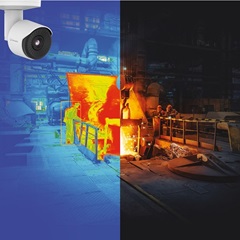
The global infrared imaging market is projected to grow from USD 8.61 billion in 2025 to USD 11.65 billion by 2030, at a CAGR of 6.2%. The infrared imaging market presents opportunities in AI-powered thermal analytics, drone-integrated surveillance, and autonomous inspection systems.
This is the latest information coming from Marketsandmarkets, whose analysts also suggest that growth in predictive maintenance, smart manufacturing, and energy-efficient infrastructure are other factors driving demand. Additionally, increasing needs for non-contact monitoring, environmental assessments, and real-time diagnostics create avenues for scalable, intelligent, and sector-specific infrared imaging solutions across industries.
The thermal segment is expected to capture a dominant share of the infrared imaging market due to its broad applicability and cost-effective deployment across industries. Unlike other types, thermal imaging detects heat signatures without requiring any visible light, making it ideal for applications in total darkness, smoke, or fog. This makes it highly valuable in defence, surveillance, industrial inspections, and fire detection.
Additionally, advancements in uncooled thermal sensors have made the technology more affordable, boosting its adoption in commercial and consumer-grade products. From automotive driver-assistance systems to HVAC inspections and energy audits, thermal imaging is critical in preventive maintenance and safety applications. Moreover, increased integration with AI and IoT systems is enhancing the intelligence and automation capabilities of thermal solutions, widening their use cases.
The scalability, accuracy, and reliability of thermal imaging contribute to its continued prominence, especially as industries prioritise safety, operational efficiency, and real-time monitoring in increasingly complex and remote environments. As such, the thermal segment is poised to remain a cornerstone of the infrared imaging landscape throughout the forecast period.
Cameras are projected to register a significant CAGR in the component segment of the infrared imaging market due to their rising use across multiple sectors, such as defence, industrial automation, automotive, and healthcare. These infrared cameras enable the visualisation of temperature variations and are essential for real-time thermal monitoring, inspection, and diagnostics. Their versatility allows integration into handheld devices, fixed surveillance systems, and drone platforms. Advancements in sensor resolution, compact design, and cost reduction further drive their adoption.
Additionally, the emergence of uncooled infrared cameras has made technology more accessible for commercial and consumer applications. In smart manufacturing environments, infrared cameras are extensively used for predictive maintenance, helping detect mechanical wear or overheating components before failures occur. In the automotive industry, they are increasingly featured in advanced driver-assistance systems (ADAS).
Moreover, AI-powered enhancements enable intelligent data interpretation from thermal images, supporting automation and decision-making. With such diverse use cases and continuous innovation, the camera segment is positioned to demonstrate substantial growth and play a pivotal role in expanding the capabilities of infrared imaging systems.
During the forecast period, Asia Pacific is anticipated to record the highest CAGR in the infrared imaging market, driven by rapid industrialisation, infrastructure growth, and increasing defence budgets in key countries such as China, Japan, and India. The region is witnessing large-scale adoption of infrared technologies in manufacturing for quality control, energy audits, and equipment maintenance, particularly in electronics, automotive, and heavy industries.











